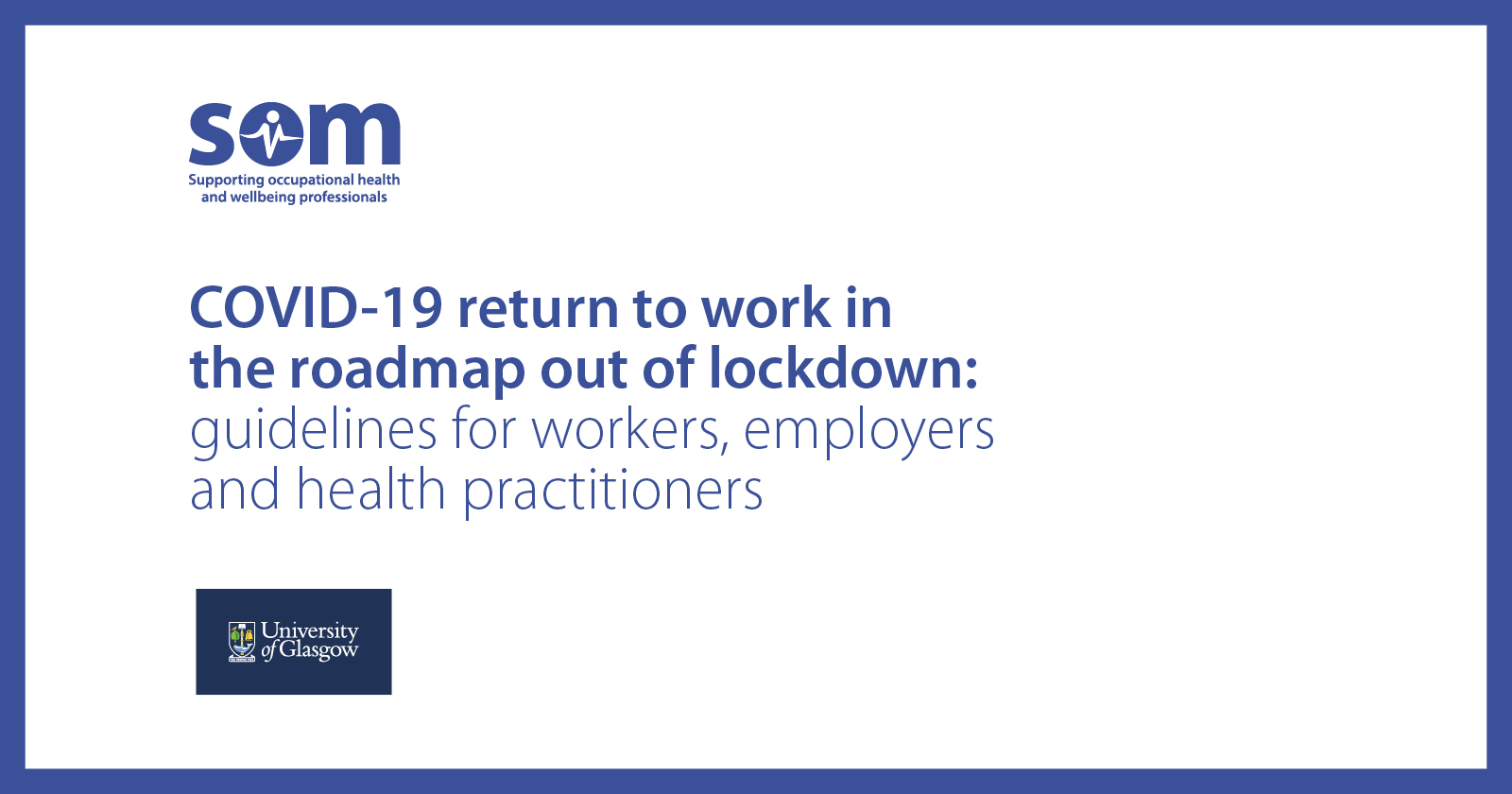
The University of Glasgow and The Society of Occupational Medicine have launched COVID-19 return to work guidelines which, for the first time, take account of community prevalence, vaccination status and previous COVID-19 infection in the risk assessment.
There are multiple factors to consider in the COVID-19 return to work risk assessment. These include community infection levels, individual vulnerability, workplace / commute transmission risk, workers' concerns / expectations and more recently, vaccination and previous COVID-19 infection.
In this rapid guide, the authors describe these factors and present a simple stepwise approach to inform decisions and facilitate safe return to work.
The guidelines are intended for workers, employers and health practitioners. Unfortunately, only 50% of UK workers have access to occupational health, so for many workers their risk assessment will have to be done by their GP, employer or themselves and the guidance will help all parties understand their risks and the appropriate work-related control measures.
Why do we need this guidance now?
With the successful roll-out of the UK vaccination programme, substantial reductions in community transmission rates compared to previous months, and lockdown measures easing, the challenge now is to get as many workers as possible back to work safely.
Some workers were in ‘shielded’ groups who were advised to ‘stay at home’, and others chose to self-isolate at home because of a perceived or real increased risk.
The health, financial and social consequences of workers not returning to work could be catastrophic and far reaching. Employers, health practitioners, politicians and workers themselves need to recognise that the population health outcomes and effects of potential long-term unemployment / worklessness will be much worse than will occur in this pandemic.
The guidelines also include an Appendix on worker rehabilitation and pragmatic occupational health advice for workers with Long COVID syndrome.
Download the guidance here.

